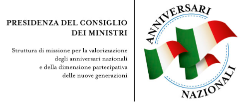Özçelĭk, Sezai
Neorealist and neo-gramscian hegemony in international relations and conflict resolution during the 1990's
The article aims to explain international relations and conflict resolution in combination with the neorealist and neo-Gramscian notions of the hegemony during the 1990s. In the first part, it focuses on neorealist hegemony theories. The Hegemonic Stability Theory (HST) is tested for viability as an explanatory tool of the Cold-War world politics and conflict resolution. Because of the limitations of neorealist hegemony theories, the neo-Gramscian hegemony and related concepts such as historic bloc, passive revolution, civil society and war of position/war of movement are elaborated. Later, the Coxian approach to international relations and world order is explained as a critical theory. Finally, the article attempts to establish a model of structural conflict analysis and resolution.
Also available on the web: http://www.iibf.ibu.edu.tr/dergiguz2005/makale4.pdf (Accessed February 6, 2009)
Also available on the web: http://www.iibf.ibu.edu.tr/dergiguz2005/makale4.pdf (Accessed February 6, 2009)
| Language | eng |
| Names |
[author] Özçelĭk, Sezai |
| Subjects |
Relazioni Internazionali
Neogramscismo
International relations
Neo Gramscism |

